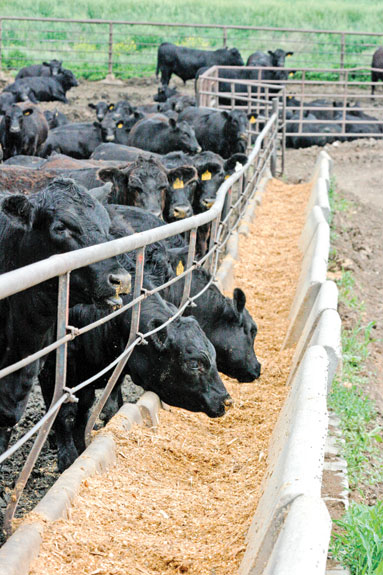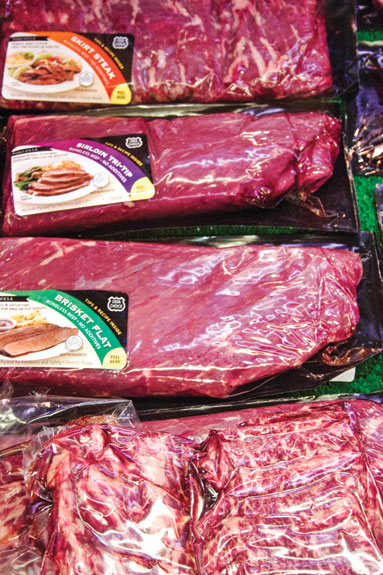Price, food safety and product quality are the top motivators for consumers when purchasing ground hamburger, chuck roast or a set of T-bone steaks at the grocery store.
These recent findings from the 2013 U.S. Beef Checkoff Program’s Beef Demand Determinant Study identify the primary consumer demands and indicate the areas in which checkoff programs and the beef industry should focus in order to move the beef market forward.
The results should not be too surprising; social media is flooded with consumer requests for fresh, natural, safe, affordable and nutritious foods.
Variety, flexibility and choice are important to today’s beef consumers. From cow-calf to feedlot, cattle operations have made great strides the past few decades in terms of productivity, reproduction, efficiency and genetics – but has the industry kept up with the market and nutritional demands of the consumer?
 Customers identify quality through taste of beef, which directly correlates to the nutrition sustaining the beef animal.
Customers identify quality through taste of beef, which directly correlates to the nutrition sustaining the beef animal.
Eighty-five percent of performance improvement in livestock in the last 40 years has come as the result of genetic improvement; however, 65 to 75 percent of the cost of meat is feed. Nutrition has not kept pace with genetics, and the time has come to close the gap.
Today, researchers are looking at how nutrition affects gene expression through nutrigenomics. This shift in industry focus changes the priority from just getting more nutrients into the animal to understanding the degree to which each nutrient affects animal production at the cell and tissue levels.
We utilize the gene chip, a DNA microarray, to measure gene expression and allow for scientists to analyze a very large number of genes at once.
With this technology, scientists have found nutrients are “gene switches” that regulate biofunctions and can improve immune response, advance carcass quality and leave less impact on the environment.
Historically, nutritionists focused on feed and reproductive efficiency, rate of gain, health and immune integrity. These are all important and remain critical, but nutrigenomics also present nutritionists with an opportunity to see how the cow’s diet affects meat quality and the nutritional value of the end product.
 Researchers want to know how gene expression of livestock is manifest through nutrition, also known as nutrigenomics. Photo by David Cooper.
Researchers want to know how gene expression of livestock is manifest through nutrition, also known as nutrigenomics. Photo by David Cooper.
A nutrition program fed to 75,000 cattle in Kentucky tailored nutrition to the animals’ requirements at each stage of development.
The feeding strategy aimed to manage growth and quality while minimizing excess waste.
The program has had measurable results thus far. At the processor, MDA (product of fat oxidation) is 50 percent lower; meat color and mineral status are improved and the meat exhibits greater moisture content.
Programmed nutrition may also provide other opportunities to market to the consumer, such as decreasing the fat content and cholesterol, while improving flavor and tenderness in the end product.
Limiting growth-promoting antibiotics in production is another prospect of using this type of feeding program.
By closing the gap between genetic potential and animal nutrition, the industry can not only help feed the world, but help nourish it.
Alltech’s current database of DNA samples from mice, chickens, pigs and cows may provide the industry with new feeding strategies and the ability to fully optimize the use of expensive ingredients.
The more expensive food becomes, the more people will demand alternatives. Food is an emotional experience, and many food-purchase decisions are emotional.
The number one trait consumers demand is taste, and the test will be how the beef industry can maintain and increase consumer demand while the product becomes more expensive.





